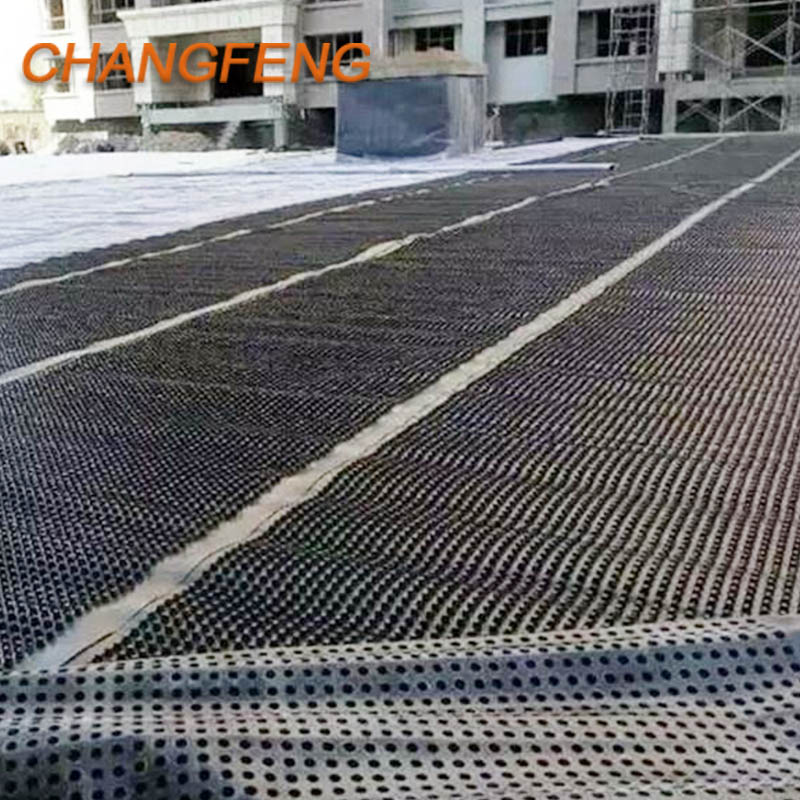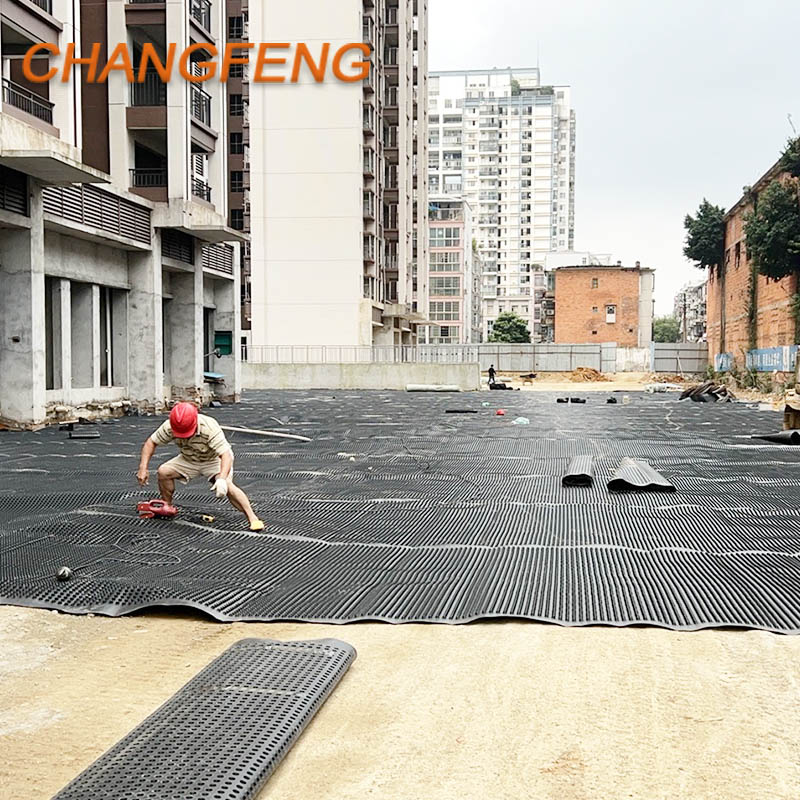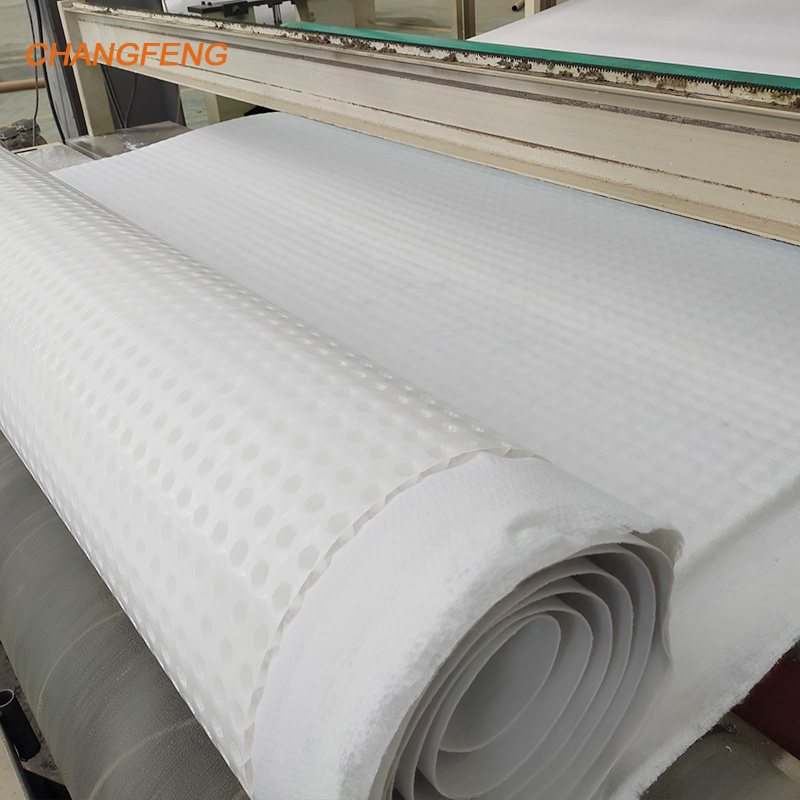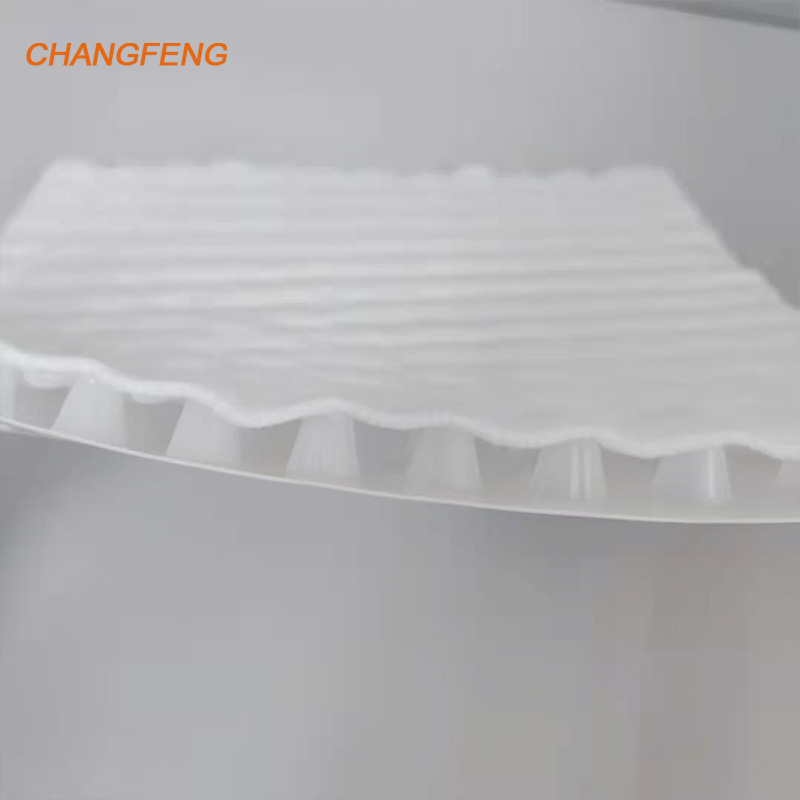Products Description
Drainage Board with Holes is manufactured from high-density polyethylene (HDPE) plastic, functioning as a specialized geomembrane featuring surface dimples in cylindrical or semi-conical shapes. This board can be optionally laminated with non-woven geotextile for enhanced filtration. Its unique dimpled design ensures efficient passage of liquids and gases between the protrusions, promoting optimal drainage and ventilation.
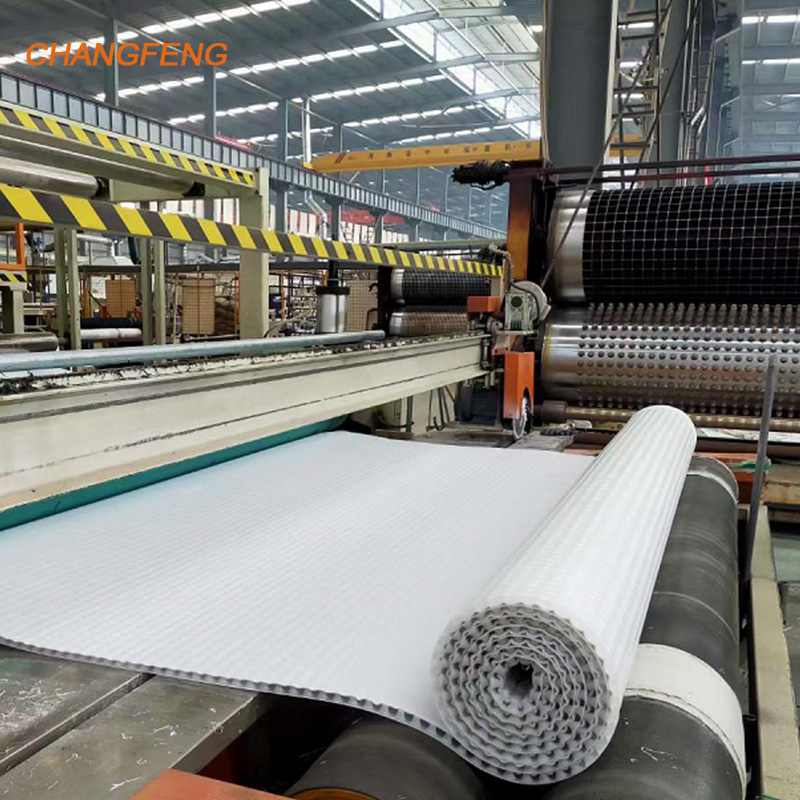

The typical components of a composite drainage board may include:1.Geotextile Fabric: This is a permeable textile material that allows water to pass through while preventing soil or other particles from clogging the drainage system. The geotextile fabric acts as a filter to ensure proper water flow. 2.Drainage Core: This layer is usually made of a plastic material, such as high-density polyethylene (HDPE), and features a network of dimples or studs to create channels for water to flow through. The drainage core provides structural support and helps to distribute the weight of the overlying materials. 3.Protection Layer: Sometimes, a protective layer such as a non-woven geotextile fabric or a geocomposite is added on top of the drainage core to shield it from damage during installation and to provide additional filtration. Composite drainage boards offer several advantages, including improved drainage efficiency, reduced soil erosion, enhanced stability of structures, and better management of water runoff. They are often used in conjunction with other drainage systems, such as perforated pipes, to create comprehensive water management solutions for various construction projects.
Primary Applications:
Waterproofing protection and drainage systems for building foundation slabs, basement walls, and plaza decks.
Drainage and water retention for green roofs, podium decks, and sports fields.
Waterproofing and drainage systems for highways, railways, tunnels, and embankments.
Landscaping projects, such as ground-level gardens and green roofs above underground parking garages.
